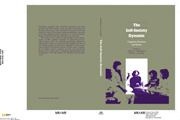Book contents
- Frontmatter
- Contents
- Contributors
- Preface and acknowledgments
- Introduction: The self–society dynamic
- 1 Exploring the relevance of social cognition for the relationship of self and society: Linking the cognitive perspective and identity theory
- 2 Toward a sociology of cognition
- 3 The cerebral self: Thinking and planning about identity-relevant activity
- 4 Growing up: The development and acquisition of social knowledge
- 5 The social contexts of self-feeling
- 6 Self-processes and emotional experiences
- 7 An affect control view of cognition and emotion
- 8 The self-concept as a basis for a theory of motivation
- 9 Attitudes, behavior, and the self
- 10 From changing selves toward changing society
- 11 Possible selves and social support: Social cognitive resources for coping and striving
- 12 Is the road to helping paved with good intentions? Or inertia?
- 13 Social structure and the moral self
- 14 The production of selves in personal relationships
- 15 Conclusion
- Indexes
5 - The social contexts of self-feeling
Published online by Cambridge University Press: 23 September 2009
- Frontmatter
- Contents
- Contributors
- Preface and acknowledgments
- Introduction: The self–society dynamic
- 1 Exploring the relevance of social cognition for the relationship of self and society: Linking the cognitive perspective and identity theory
- 2 Toward a sociology of cognition
- 3 The cerebral self: Thinking and planning about identity-relevant activity
- 4 Growing up: The development and acquisition of social knowledge
- 5 The social contexts of self-feeling
- 6 Self-processes and emotional experiences
- 7 An affect control view of cognition and emotion
- 8 The self-concept as a basis for a theory of motivation
- 9 Attitudes, behavior, and the self
- 10 From changing selves toward changing society
- 11 Possible selves and social support: Social cognitive resources for coping and striving
- 12 Is the road to helping paved with good intentions? Or inertia?
- 13 Social structure and the moral self
- 14 The production of selves in personal relationships
- 15 Conclusion
- Indexes
Summary
Two historically important themes in sociological thought often receive only lip service in current sociological examinations of the self-conception. First, the self-conception is often treated strictly as a cognitive phenomenon, divorced from affect. In contrast, Charles Horton Cooley (1902), the first major sociologist to make the self central in understanding the person in social structure, asserted the primacy of the self-sentiments. He identified the sense of my and mine and the associated emotional experiences as the first manifestations of a sense of self. If Cooley was correct, and affect precedes the cognitive formulation of who I am, we may be asking too much when we assume that people can easily translate the vague sense of who they are into words. Rather than asking people to answer the question, Who am I? we may learn more by asking people when they feel real and when they feel unreal.
A second common practice among sociologists is to describe the self as merely an internalized organization of social roles, memberships, and personal dispositions. However, a distinctive sociological theme in behavioral studies has been the importance of the situational contexts in which attitudes and behavior are manifested. A key orienting hypothesis in the sociological study of self-processes should be that self-disco very, self-recognition, and self-presentation take place in identifiable social contexts. A disproportionate emphasis on ascertaining each individual's internalized conception of self has diverted attention from exploring self-in-situation interactions through which discovery and recognition of self occur.
- Type
- Chapter
- Information
- The Self-Society DynamicCognition, Emotion and Action, pp. 103 - 122Publisher: Cambridge University PressPrint publication year: 1991
- 24
- Cited by

